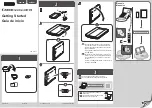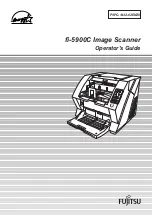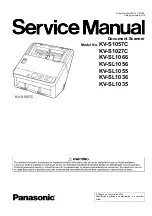
Color Balance
The primary colors used in scanners are red, green and blue. The Nikon Scanner
plug-in’s Red, Green and Blue Exposure controls enable you to directly affect the expo-
sure time of each of the red, green and blue cycles of a scan. Increasing the red exposure
is equivalent to turning up the brightness of the red light without changing the green or
blue brightness. In a scanner, however, the light is not actually turned up, but rather
the exposure time is increased. The effect though, is similar.
Unlike the brightness or contrast, the color controls affect one primary color at a
time. However, changing a color exposure affects the overall color balance. The reason
is that when a single primary color is reduced, the two other primary colors appear to be
increased. For example, if red is decreased, the image appears to become more cyan.
Cyan is the combination of blue and green, and is the inverse color of red. Even though
the blue and green exposure values were not changed, the image may appear as if these
were changed.
Simulations of the results from modifying the color controls can be seen in the
preview image as the controls are modified. There is a practical range of available simu-
lation. Your changes may not be properly reflected in the preview if you are too close to
either end of the adjustment range (25-100 for Coolscan, 0 to 255 for LS-3510AF or
LS-3500).
Like the brightness control, the color controls affect the entire range of the color.
For example, changing the red intensity lightens the red shadows, midtones and high-
lights by the same amount. More accurate local control can be achieved by modifying
the gamma curves, discussed in Chapters Fifteen and Sixteen.
Care must be exercised when modifying colors, as undesirable results can occur.
It should also be noted that the monitor calibration and ambient light in the room can
affect your results. For example, if your monitor is calibrated such that what should be
a neutral gray appears to be red, you might decrease the red exposure of a scan to attain
gray on the monitor. Yet, this would be inaccurate if the printer was properly color cali-
brated. The resulting printout would be red ‘starved,’ causing the image to have a cyan
cast.
Macintosh only: The inverse colors of red, green and blue are cyan, magenta and
yellow, respectively. Consequently, the slider controls above each of the Red, Green and
Blue Exposure buttons range from the inverse color to the primary color. For example,
the red slider ranges from cyan to red. The green slider ranges from magenta to green,
and the blue slider ranges from yellow to blue. Use of these controls is explained in the
next sections.
Red Exposure
Macintosh: The Red Exposure button, the button labeled
R
in the Scan dialog,
lets you select the amount of red exposure in the image either through the associated
Page 124
Software Reference for Scanners
Contrast, Brightness and Color Balance
Chapter 13
Summary of Contents for Scanners
Page 1: ...Software Reference for Scanners ...
Page 14: ...Page XIV Software Reference for Scanners Table of Contents ...
Page 36: ...Page 22 Software Reference for Scanners Software Installation IBM PC or Compatible Chapter 3 ...
Page 126: ...Page 112 Software Reference for Scanners Cropping and Sizing Images Chapter 11 ...
Page 132: ...Page 118 Software Reference for Scanners Film Type and Orientation Chapter 12 ...
Page 146: ...Page 132 Software Reference for Scanners Focusing with Coolscan Chapter 14 ...
Page 170: ...Page 156 Software Reference for Scanners The Gamma Curve Editor Dialog Chapter 16 ...
Page 194: ...Page 180 Software Reference for Scanners Troubleshooting Windows ...
















































